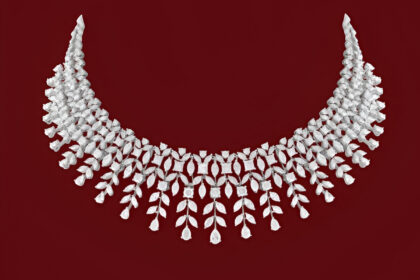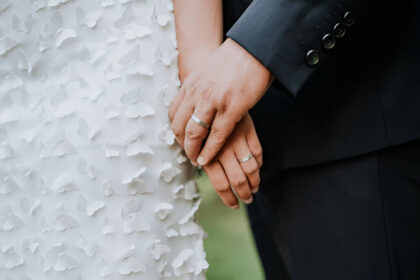Indigo fabric refers to any textile that has been dyed using indigo, a deep blue dye derived historically from the Indigofera plant. Prized for its rich, natural colour and enduring beauty, indigo-dyed fabrics have been used across continents and cultures for centuries. Today, they are celebrated not just for their visual appeal but for their cultural significance, sustainability, and versatility in modern design.
The Origins and Cultural Heritage of Indigo Dyeing
Indigo dye has roots dating back over 4,000 years. It was used in ancient Egypt, India, Africa, and Japan, making it one of the oldest known natural dyes. Each region developed its techniques and styles for indigo dyeing, creating traditions that still inspire contemporary design.
In India, indigo dye was an essential part of textile culture, especially in regions like Rajasthan and Gujarat, where block printing and resist dyeing are prominent. In West Africa, indigo held spiritual and cultural meaning, with the Yoruba people of Nigeria using it in ceremonial garments. In Japan, the method of aizome became a sophisticated art form, known for creating intricate patterns and gradients.
These traditional techniques continue to inform how we understand and use indigo fabric today.
How Indigo Fabric is Made: From Plant to Textile
The process of creating indigo-dyed fabric begins with extracting dye from indigo plants. The leaves are fermented, which converts the indican compound into indigotin—the pigment responsible for the blue colour. The dye solution is typically prepared in large vats and kept at the right pH level to allow proper adhesion to fabric.
The fabric, usually cotton, linen, or silk, is dipped into the vat and removed repeatedly to build up the depth of colour. When first removed from the vat, the fabric appears greenish, but turns blue upon exposure to air through oxidation.
Artisans may apply resist techniques such as tie-dye, batik, or shibori to create complex patterns. This craftsmanship results in one-of-a-kind textiles that celebrate imperfections and human touch.
The Timeless Appeal of Indigo in Fashion and Decor
Indigo fabric is renowned for its deep, soulful blue hue, which pairs effortlessly with a wide array of color palettes. From traditional garments to modern minimalist decor, its presence conveys elegance, heritage, and authenticity.
In fashion, indigo is used in:
-
Hand-block printed dresses and skirts
-
Scarves and shawls with ethnic patterns
-
Indigo denim and jackets
In home decor, indigo appears in:
-
Cushion covers and throw pillows
-
Curtains and wall tapestries
-
Table runners and bedspreads
The natural texture and visual depth of indigo fabric add richness to interiors, enhancing both rustic and modern spaces.
Sustainability and Ethical Aspects of Indigo Fabric
The growing demand for sustainable textiles has reignited interest in natural indigo dyeing. Unlike synthetic dyes, which often use toxic chemicals and large amounts of water, natural indigo is biodegradable and eco-friendly.
Moreover, many indigo textiles are created through handcrafted methods, supporting artisan communities and preserving cultural traditions. By choosing ethically sourced indigo fabric, we promote slow fashion and sustainable home design that values quality over quantity.
Some key sustainability benefits include:
-
Reduced chemical pollution
-
Lower water usage in dyeing
-
Preservation of indigenous knowledge
-
Support for artisan economies
Modern Innovations in Indigo Textile Production
While traditional techniques still dominate the artisan world, modern technologies have allowed for hybrid approaches. Designers now blend digital printing with natural dyeing, creating unique collections that merge the past and the future.
In addition, organic indigo farming is on the rise, with some regions reviving indigenous farming practices to produce dye in harmony with the environment.
Designers and manufacturers are also experimenting with new fibers, such as bamboo and hemp, dyed with indigo for eco-luxurious products.
Indigo Fabric in Global Fashion Trends
Global fashion houses and independent designers have embraced indigo as a core color. Its versatile tone complements all seasons, making it a staple in:
-
Capsule wardrobes
-
Luxury resort wear
-
Bohemian chic collections
Runways in Paris, Tokyo, and New York have featured hand-dyed indigo pieces, elevating them from heritage textiles to couture elements.
Meanwhile, streetwear brands use indigo-dyed denim and oversized jackets to add raw, authentic energy to modern fashion.
How to Care for Indigo Fabric
Indigo-dyed fabrics require gentle care to maintain their beauty. Because they are often colored using natural dyes, the pigment may fade with time or transfer slightly, especially when new.
To extend the life of your indigo fabric:
-
Hand wash with cold water and mild detergent
-
Avoid bleach or strong chemicals
-
Dry in the shade to prevent fading
-
Iron on low heat if needed, or steam lightly
With proper care, indigo fabrics develop a beautiful patina over time, telling the story of wear and age.
Where to Find Authentic Indigo Fabric
Authentic indigo fabrics can be found through:
-
Local artisan cooperatives
-
Fair trade boutiques
-
Sustainable textile brands
-
Online marketplaces specializing in hand-dyed products
When purchasing, look for certifications or descriptions that mention natural dye, handcrafted, or ethical sourcing. Supporting these businesses helps keep ancient dyeing traditions alive and ensures that artisans are fairly compensated.
Conclusion: Why Indigo Fabric Is More Relevant Than Ever
Indigo fabric is not just a material; it’s a bridge between history, art, and modern sustainability. Its deep blue tones evoke emotion, tradition, and timeless elegance. As consumers seek meaningful products with low environmental impact, indigo textiles stand out as both beautiful and responsible.
Whether adorning a minimalist apartment, enriching a bohemian wardrobe, or empowering artisan economies, indigo fabric continues to define and inspire.




